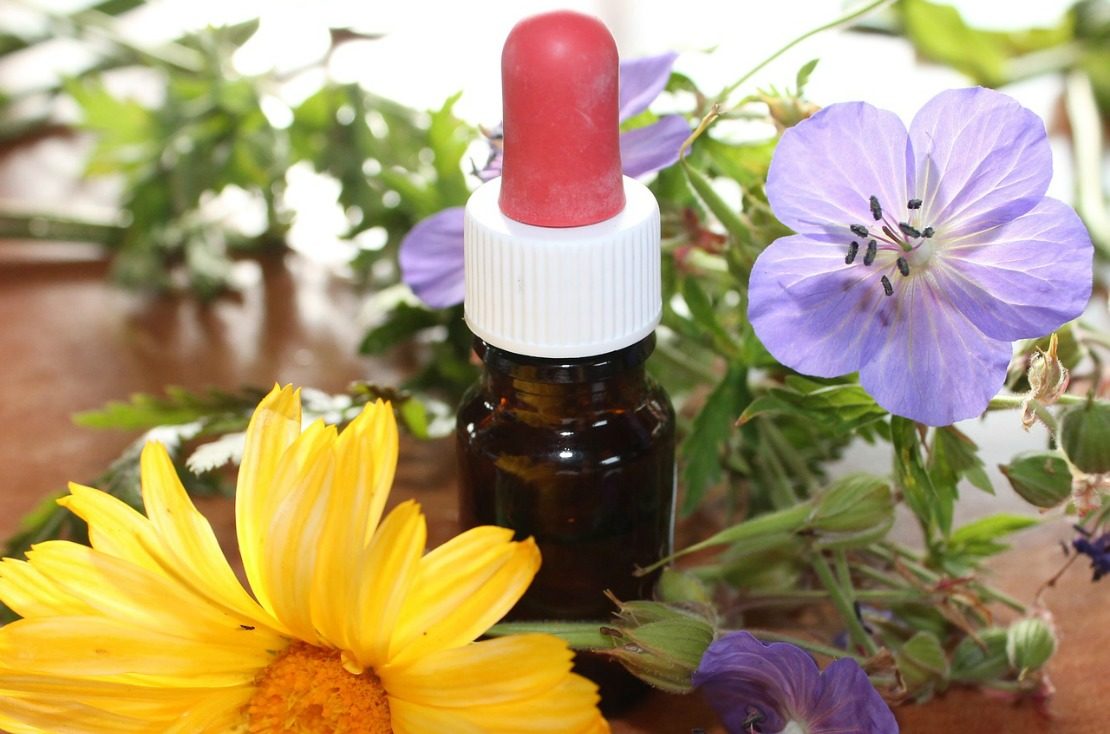
How to Make Herbal Ear Drops
Earaches never seem to happen at a convenient time. They often sneak up on you in the middle of the night causing pain and misery. Thankfully, having a supply of herbal ear drops on hand can help ease pain and support the body when fighting a possible infection. I should know, as I recently found myself in need of them!
A few weeks ago, my daughter was struck with an earache before I had finished stocking my herbal remedy cabinet for the season. I suddenly found myself with a miserable child and no ready-made ear drops! As I quickly rummaged through the herbs I had on hand, I looked for anything that would help my kiddo. After settling on a few herbs, including my very last clove of fresh garlic, I got started making a batch of herbal ear drops as quickly as possible. Within an hour, I was placing warm, comforting drops into my child’s ear, and within fifteen minutes she told me she could feel the plugged-up mucus in her ear draining away! Sweet relief—whew!
Not only are herbal ear drops a great ally to have on hand during cold and flu season for soothing painful earaches, but many herbalists use them to help with the itchiness and discomfort of excess ear wax.
Today, I’d like to show you how to make herbal ear drops in your own kitchen so you will be prepared if an inconvenient earache sneaks up on you in the middle of the night.
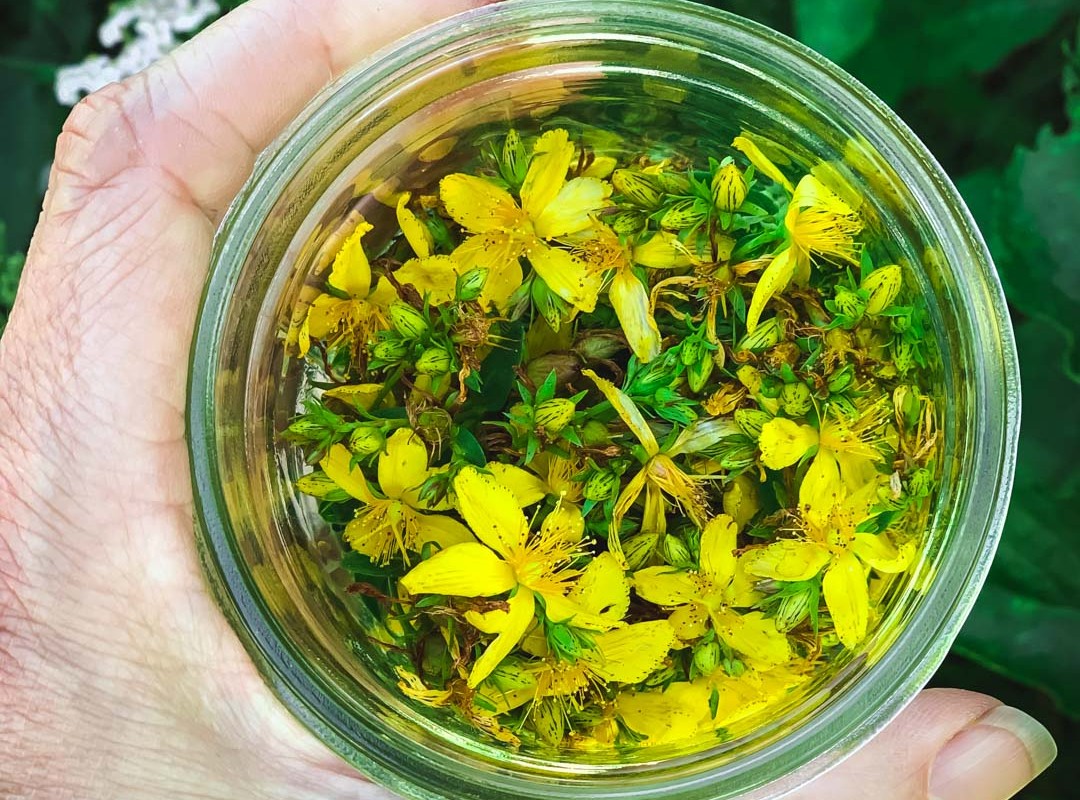
How to Make Herbal Ear Drops
Herbal ear drops are, essentially, a simple infused oil brewed with herbs that are beneficial for supporting the ears during times of duress. Herbal ear drops are easy to make at home and a great addition to any herbal remedy cabinet or first aid kit.
Below you’ll find a basic recipe for herbal ear drops. This recipe makes just under 4 fluid ounces of oil.
Basic Herbal Ear Drops
4 tablespoons dried herbs (see herb suggestions below)
1/2 cup (4 fl oz) olive oil
- Put the herbs in a sanitized, dry jar.
- Add the oil to the jar.
- Use a sanitized spoon to push the herbs down and release trapped air.
- Place a lid on the jar or if you are using fresh herbs cover the jar with a piece of cheese or muslin cloth to allow any moisture to escape.
- Set the jar in a dark, warm spot for 4-6 weeks to infuse.
- Finish your herbal ear drops by carefully straining the oil through a piece of cheesecloth to remove any herbal particulates.
- Bottle your new ear oil in a clean, sanitized dropper bottle and label.
- Store in the refrigerator until needed.
You can choose to include a variety of herbs in your ear drops or make your ear drops with just two ingredients! Chances are you have the ingredients to make this super simple herbal eardrop drop oil in your kitchen right now. Be sure to read up on the benefits of using garlic in your herbal ear drops in the herb information below.
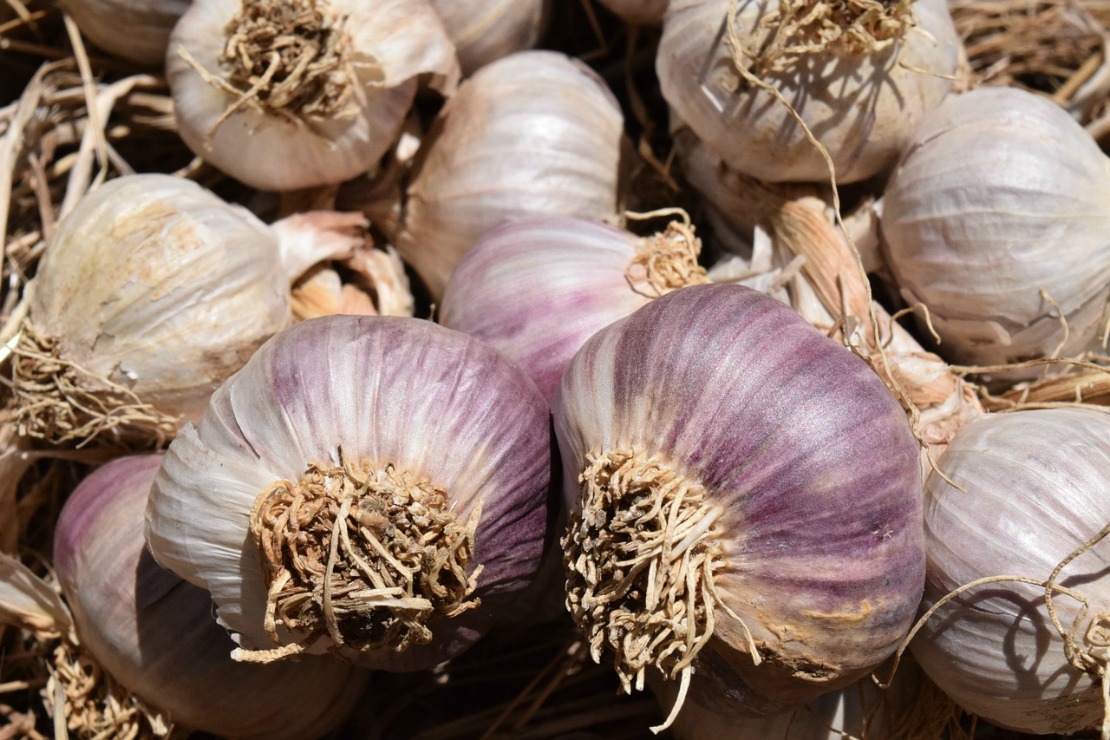
Two Ingredient Herbal Ear Drops
4 to 6 cloves of garlic
1/2 cup olive oil
- Finely dice fresh garlic and place it in the upper saucepan of a double boiler alongside olive oil. Allow this mixture to sit undisturbed for 10 minutes.
- In the meantime, fill the bottom saucepan of the double boiler with water and place it over medium heat to begin heating.
- When 10 minutes have passed, place the top saucepan of the double boiler over the bottom saucepan and heat for 30-60 minutes. Keep a careful eye on the water level in the bottom saucepan and refill it as needed.
- After an hour, carefully strain the oil in the top saucepan through a fine mesh strainer lined with layered cheesecloth.
- Compost or discard the used plant material and transfer the strained oil to a dark-colored glass bottle. Cap with a dropper top and label. Store in a cool, dark location for up to 12 months.
- Place 1-3 drops of room temperature oil in achy ears 3-4 times daily. Do not use if the eardrum is perforated.
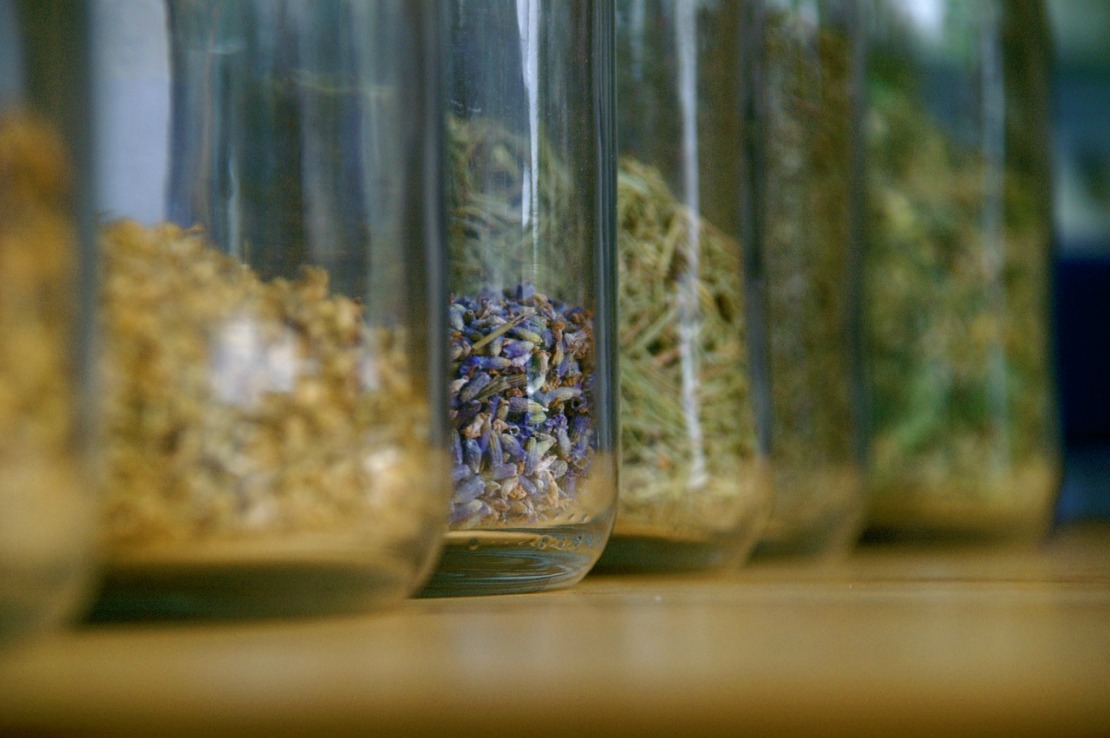
Make Those Herbal Ear Drops Fast!
For those moments when you find yourself in need of herbal ear drops, like right now, but don’t have any on hand—never fear! You can still quickly whip up those much needed drops either using the method described in the Two-Ingredient Herbal Ear Drops recipe above, or the method below.
Step one: Place the herbs and olive oil in a sanitized, heat safe jar (like a canning jar) or a small heat safe bowl.
Step two: Put the jar or bowl into the oven. Set the temperature to the lowest setting and leave the door cracked open. Or, put the jar/bowl in a crockpot with a couple of inches of water in the bottom (being careful to not get any water into the oil) and turn the crockpot on to the lowest setting.
Step three: If possible, wait for an hour or so while the herbs infuse into the oil. This gives the herbs time to transfer their properties into the oil. However, if you’re crunched for time, you can use the drops in as soon as 20 minutes, if necessary.
Step four: Strain the herbs out of the oil using a piece of cheesecloth to remove any small herbal particulates. If you wish, you can strain only a small amount of oil out for immediate use and keep infusing the remainder of the herbs for up to a total of 8 hours. Be sure to cool the oil to room temperature or just above before putting it in the ears.
Step five: Finish up your oil by placing it in a sanitized, dry jar. Store any you don’t use right away in the fridge for future use.
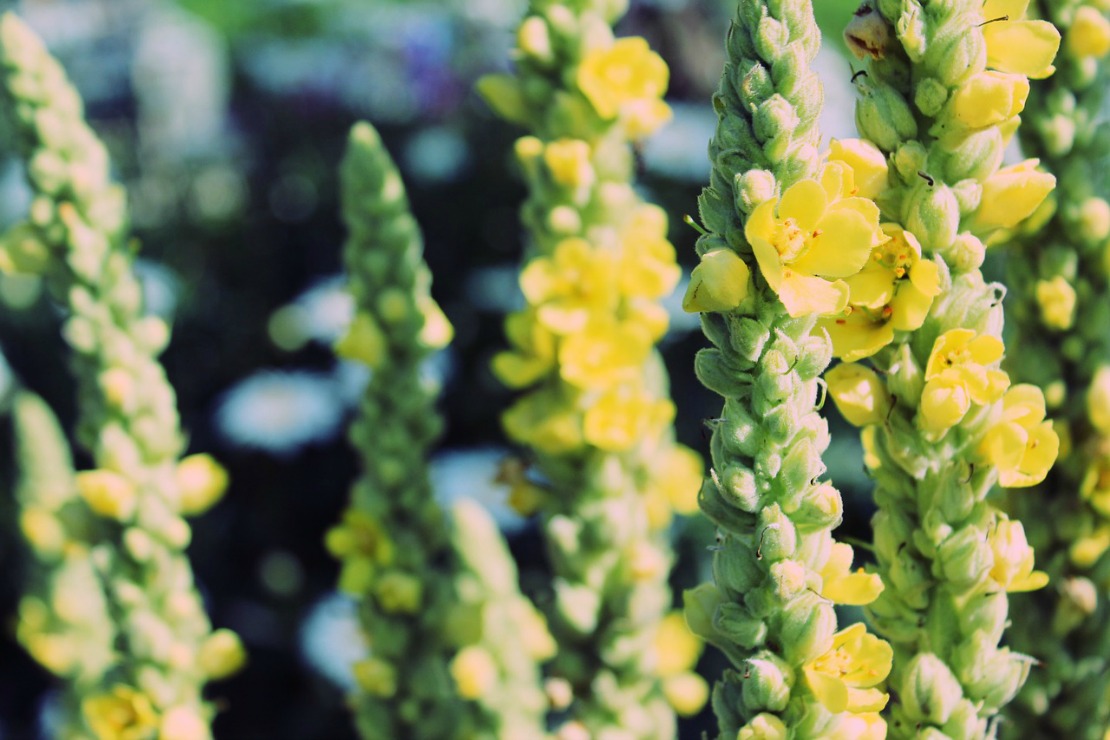
Useful Herbs for Creating Herbal Ear Drops
The following four herbs are perhaps the most common botanicals used in herbal ear drops. In a study conducted in 2001, ear drops made with garlic, mullein, St. John’s wort, and calendula were compared to pharmaceutical ear drops for managing pain associated with acute otitis media (AOM) in a group of children ages 6-18. The herbal preparation was found to be “as effective as Anaesthetic ear drops and was proven appropriate for the management of AOM-associated ear pain” (Sarrell, et al., 2001 para.6).
Other potentially useful herbs included in ear drops are: chamomile flowers, lavender blossoms, willow bark, and plantain.
Garlic (Allium sativum)
Useful properties: antimicrobial, decongestant, antispasmodic, immune stimulant (“Garlic,” n.d.; Romm, 2000).
You may be wondering why something that is so tasty on your dinner plate would be used to make ear drops. Garlic cloves offer us a wide-range of beneficial properties including benefits for the cardiovascular, digestive, and respiratory systems (“Garlic,” n.d.). And, garlic is well suited as an ingredient in ear drops because of its antimicrobial properties which are used to help address infections with a viral, bacterial, or fungal origin (Tilgner, 1999; “Garlic,” n.d.).
Mullein Flowers (Verbascum thapsus)
Useful properties: anti-inflammatory, antispasmodic, demulcent, relaxant (“Mullein,” n.d.; McIntyre, 1996).
These happy little yellow flowers are often found in herbal ear drops right along with garlic as a traditional preparation used by herbalists. Herbalist jim mcdonald explains that, “Mullein flower oil is often combined with infused Garlic oil, and there are few remedies as effective for ear infections” (mcdonald, n.d., para. 2). The flowers of this amazing plant are a great addition to herbal ear drops whether you choose to combine them with garlic or other herbs or to simply use them on their own. The pain-relieving, demulcent, and relaxing properties of the flowers help to soothe earache and the discomfort from excessive wax in the ears (McIntyre, 1996; Groves, 2016).
St. John’s Wort (Hypericum perforatum)
Useful properties: antimicrobial, anti-inflammatory, analgesic, antispasmodic (“St. John’s Wort,” n.d.)
Well-known for its ability to help with depression and anxiety, this wonderful plant is also used for its antimicrobial, analgesic, and anti-inflammatory properties to soothe irritated tissues during respiratory infections and other painful conditions. As a topical application, the infused oil is beloved as a balm for soothing nerve pain and inflammation, including earaches (Keville, 2001; McIntyre, 1996). If possible, make your oil with fresh flowering St. John’s wort which is superior to oils infused with dried herb.
Calendula (Calendula officinalis)
Useful properties: antispasmodic, anti-inflammatory, antimicrobial, lymphatic, immune stimulant (“Calendula,” n.d.)
Calendula is considered to be a very soothing herb that is often used topically to ease irritation, infection, and pain. Herbalist Aviva Romm explains ear drops made with Calendula are, “antiseptic and pain relieving” (Romm, 2000, pg. 170).

Using Your Homemade Herbal Ear Drops
Using your newly made herbal ear drops is simple!
First, bring the ear drops to room temperature by slightly warming them, and test the temperature of the drops on the inside of your wrist. Cold drops or overly heated drops will further irritate the ear.
You can warm the drops in a few different ways:
- Hold the bottle between your hands
- Place the bottle in a cup of warm water
- Put a few drops of the oil in a spoon and carefully heat the underside with a match
- Warm a spoon under hot running water and then dry the spoon well before placing a few drops in the spoon to warm
Next, have the person lay down with the ear facing up and place 2 to 4 drops into the ear. Cover with a cotton ball (rip this in half if you need to) and encourage the person to lay with their ear facing up for a few minutes. Repeat on the other side.
Do NOT Use Herbal Ear Drops If…
It’s not recommended to use herbal ear drops if you suspect a perforated eardrum, if fluid is leaking from the ear, or if the person has tubes in their ear (White & Mavor, 1998).
So there you have it! With a little know-how and some useful supplies, you can easily make your own herbal ear drops to have on hand. Then you can be ready to help soothe away the pain and irritation of earaches drop by drop!
Learn more about creating your own herbal preparations with our Online Herbalism Courses! We offer something for everyone from the budding herbalist to those who want to refine their skills and take them to the next level.
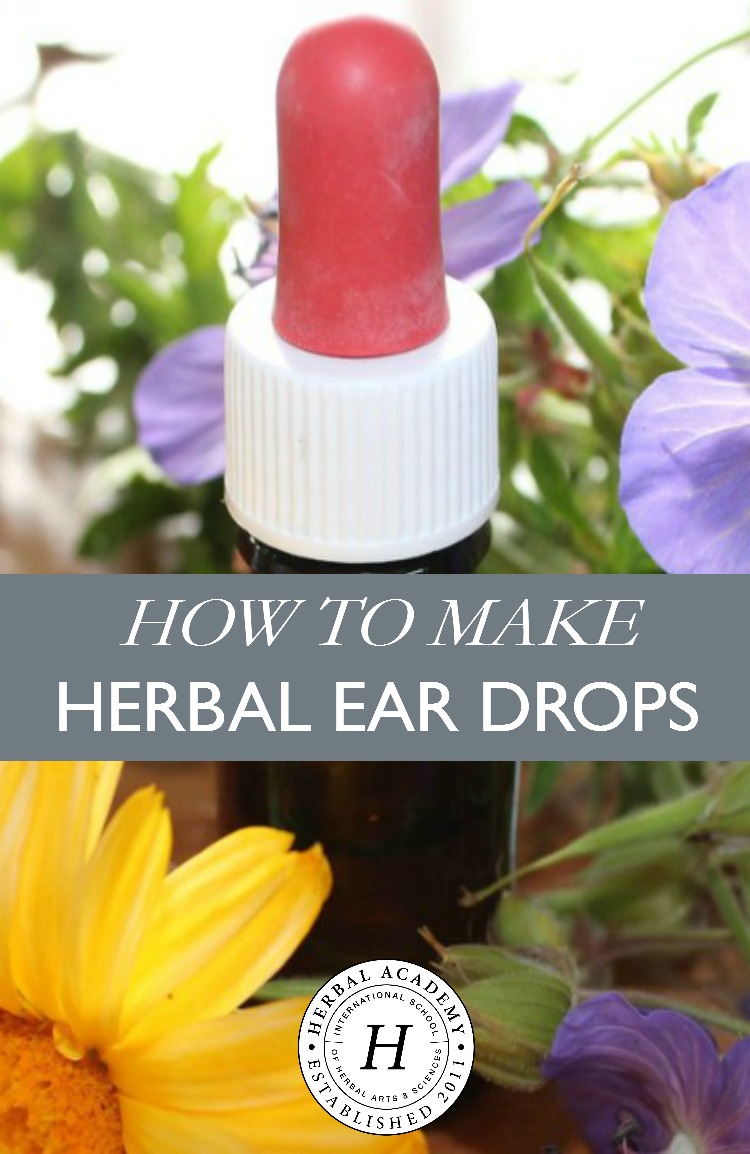
REFERENCES
Calendula Monograph. (n.d.). Retrieved on 10/15/16 from http://herbarium.herbalacademyofne.com/monographs/#ID=2025
Keville, Kathi. (2001). Natural Healing, Ease Ear Infections Naturally. Retrieved on 10/18/16 from http://www.motherearthliving.com/health-and-wellness/natural-healing-ease-ear-infections-naturally?pageid=1#PageContent1
Mcdonald, jim. (n.d.). Mullein, Vebascum thapsus. Retrieved on 10/14/16 from http://www.herbcraft.org/mullein.html
Mullein Monograph. (n.d.). Retrieved on 10/15/16 from http://herbarium.herbalacademyofne.com/monographs/#ID=2031
Romm, Aviva. (2013). Ear Infections Part 2: Antibiotics or Natural Remedies for Kid’s Ear Infections: What to Use & When. Retrieved on 10/11/16 from http://avivaromm.com/ear-infections-part-2-antibiotics-or-natural-remedies-for-kids-ear-infections-what-to-use-when
Romm, Aviva. (2000). Natural healing for babies & children. Delhi, India: Sri Satguru Publications.
Sarrell, E. M., Mandelberg, A., and Cohen, H. A. (2001). Efficacy of Naturopathic Extracts in the Management of Ear Pain Associated With Acute Otitis Media. Archives of Pediatric and Adolescent Medicine Journal,155(7):796-799. doi:10.1001/archpedi.155.7.796
St. John’s Wort Monograph. (n.d.). Retrieved on 10/15/16 from http://herbarium.herbalacademyofne.com/monographs/#ID=3038
Tilgner, Sharol N.D. ( 1999). Herbal medicine from the heart of the earth. Creswell, OR: Wise Acres Press, Inc.
White, Linda B., Mavor, Sunny. (1998). Kids, herbs, & health. Loveland, CO: Interweave Press.








